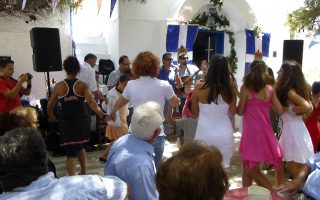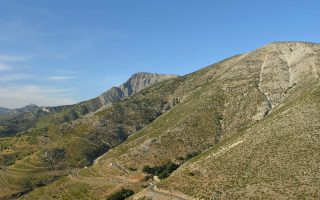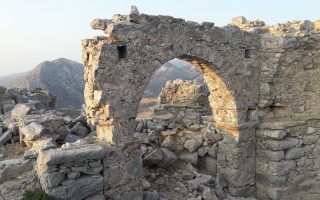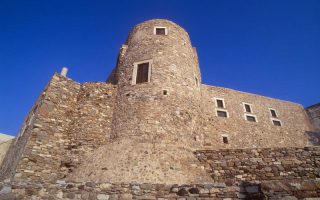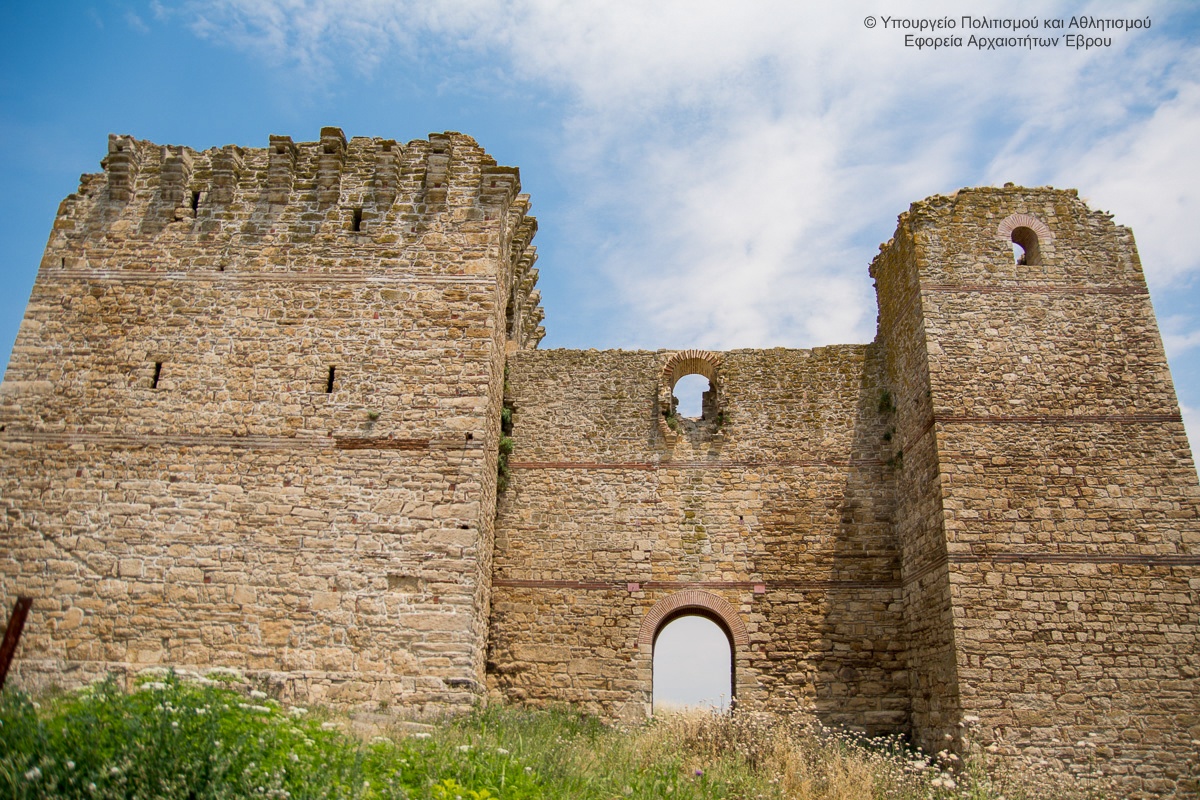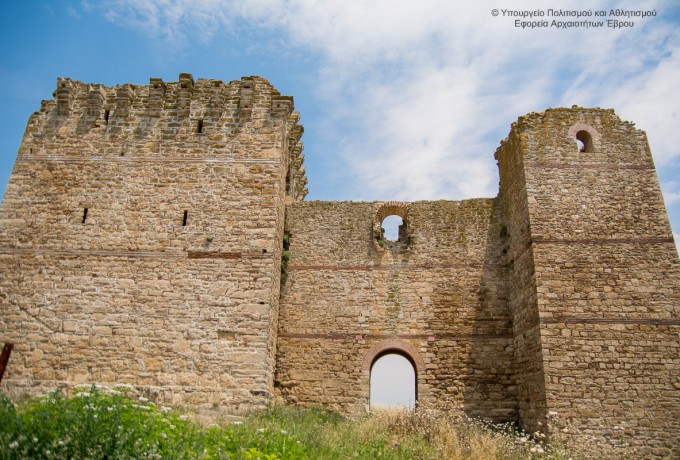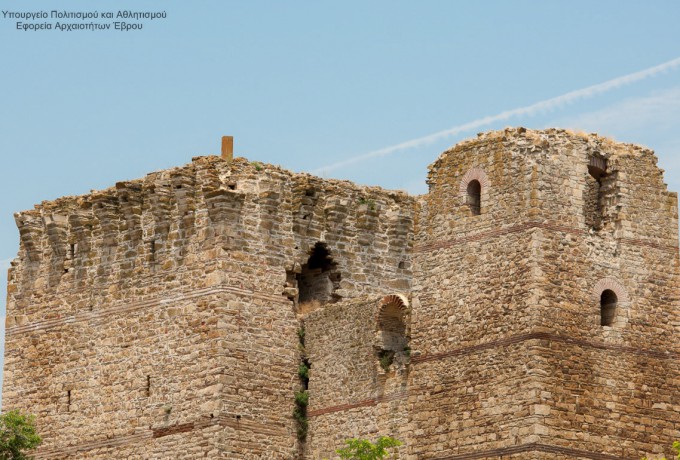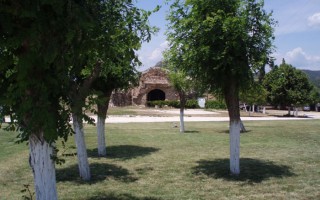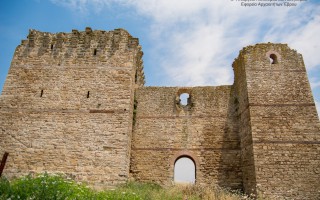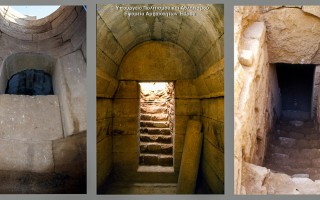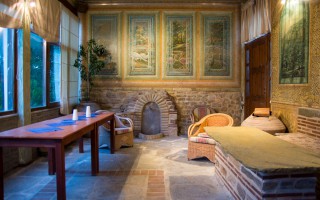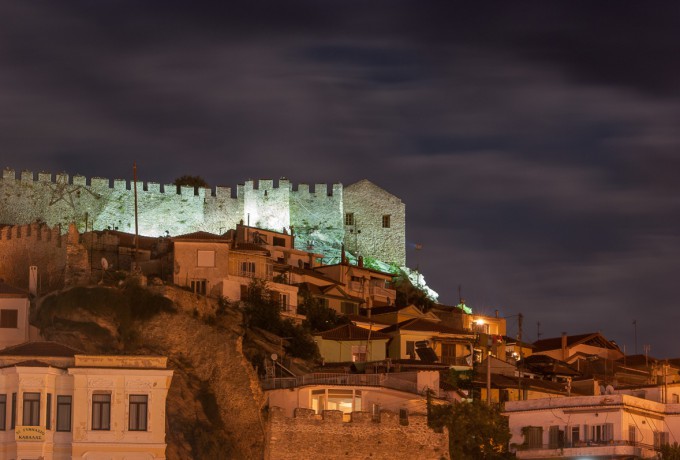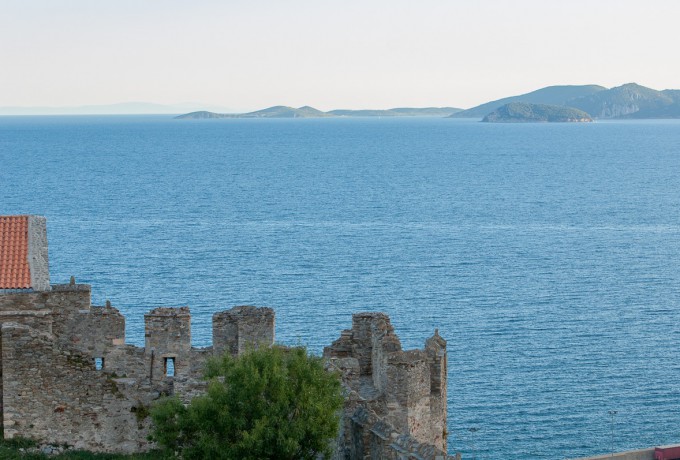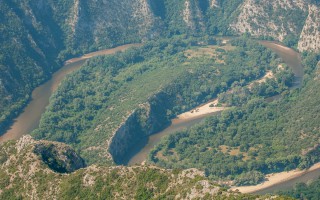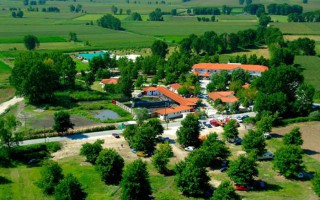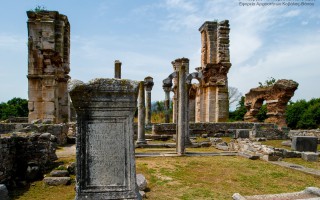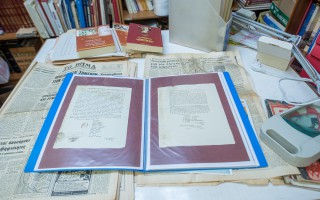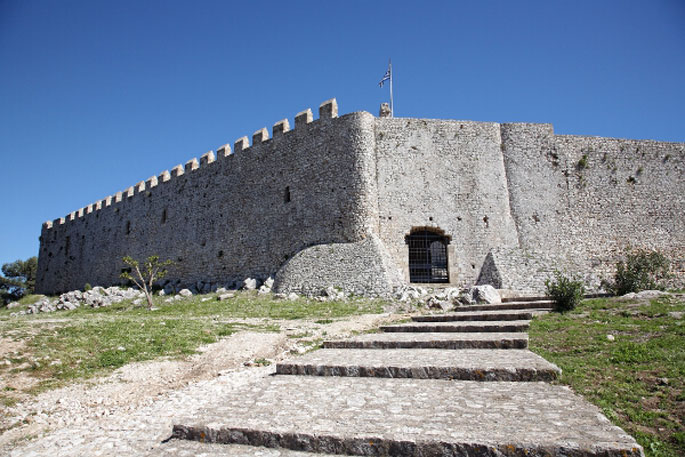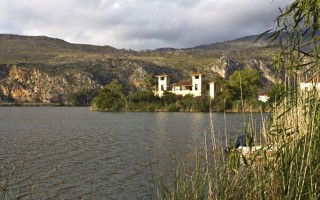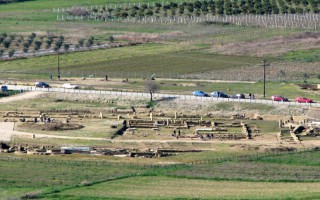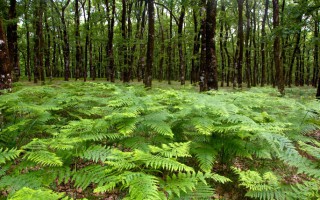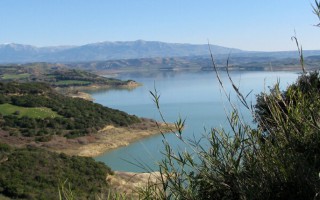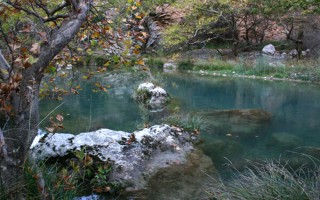This is a very important castle, built on a steep hill in the fields of Sangri and Agiassos. According to researchers, it took its name after the abundant “apaliries”, a kind of bush that sprouts there. It was erected in the first years of the Byzantine era, though probably there was already a fortification in the antiquity, because part of the wall is prehistoric. It was abandoned in the 13th century with the arrival of the Venetians. When Sanoudos came to the island, the castle was dominated by Genoese pirates. In order to force his men to conquer the castle, he burnt his galleys, so the soldiers had no other choice: drive out the Genoese and take the castle or die. After five weeks of siege, the Venetians of Sanoudos took over Apaliros castle and chased away the pirates. Sanoudos took the island and founded the Duchy of the Aegean.
Nowadays a large part of the castle strong walls is still preserved along with some towers, bastions, cisterns. Apart from the remains of houses the two-aisled church of Agios Georgios with a dome and beautiful architecture is also preserved. Some researches attribute it to the 7th-8th century. There are also other churches in the castle and climbing up there is a unique experience, as it offers an open view of the south side of Naxos.
Source: aegeanislands.gr
The Castle in Pythio (of the Byzantine Empythio) is located 16 km north of Didymoteicho, near the railway bridge, which enters from the Greek to the Turkish ground.
 It was built from 1331 to 1341 by Ioannis Kantakouzenos VI, who used it to control the crossings from the valley of the Evros river. Back then, this great river was navigable almost until Filipoypoli and it was the main commercial artery from north to south.
It was built from 1331 to 1341 by Ioannis Kantakouzenos VI, who used it to control the crossings from the valley of the Evros river. Back then, this great river was navigable almost until Filipoypoli and it was the main commercial artery from north to south.
Today, out of the small sized, but strong fort, only two large
towers and some elements of the fortification have survived. This fort was occupied by the Ottomans in 1361, who used it as a base for operations against the Didymoteicho.
Source: Eastern Macedonia & Thrace
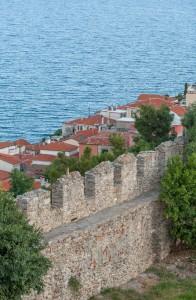 The castle of Kavala is at the top of the peninsula where the old city is built.
The castle of Kavala is at the top of the peninsula where the old city is built.
During Byzantine times and after them successive reconstructions and interventions in the fortification by the Byzantines, Venetians and Turks, have been done.
The castle (citadel) in its present form, was built in the first quarter of the 15th century, based on Byzantine foundations.
In its external theater are held cultural events.
Castle’s Presentation Website: www.castle-kavala.gr
Source: Eastern Macedonia & Thrace
Located on a hilltop in the village Castro, overlooking Elis plain, Chlemoutsi castle is one of the most imposing castles in the Peloponnese. Its name is of Slav origin and it resulted from a distortion of the word “Chelmos” or “Chelonata” which is the name of the hill on which it is built. There is evidence of a palaeolithic and middle Helladic settlement (10.000 b.C and 2.000 b.C).
The most powerful fortress of the Frankish Principate of Achaea was established in 1220-1223 by Geoffrey I Villehardouhin. In order to cover its immense construction costs, the French General had a dispute with the Principate’s latin clergy. During the Turkish rule it served as the headquarters for the Turk officials, voevoda and cadi. In 1427, Constantinos Palaeologos gained possession of the castle and used it as a military and administrative center. In 1460, it was conquered by the Ottomans and in 1867 by the Venetians who ruled it until 1715 when it was recaptured by the Ottomans.
Consisting of two parts, the Chlemoutsi castle is a fine example of fortress architecture. The horseshoe-shaped outer enclosure surrounds the inner part, located at the southeast side, on the highest spot of the hill. The total length of its walls is about 1km long. Alongside one can see remains of buildings dating back to the same period as the castle itself (13rd century), like cisterns and traces of a water piping system. The inner enclosure comprised of the Castellan residence, reception halls, kitchens and the guard’s quarters, while cisterns, chimneys and storage rooms are preserved in the two storey rooms.
Source: www.mythicalpeloponnese.gr


